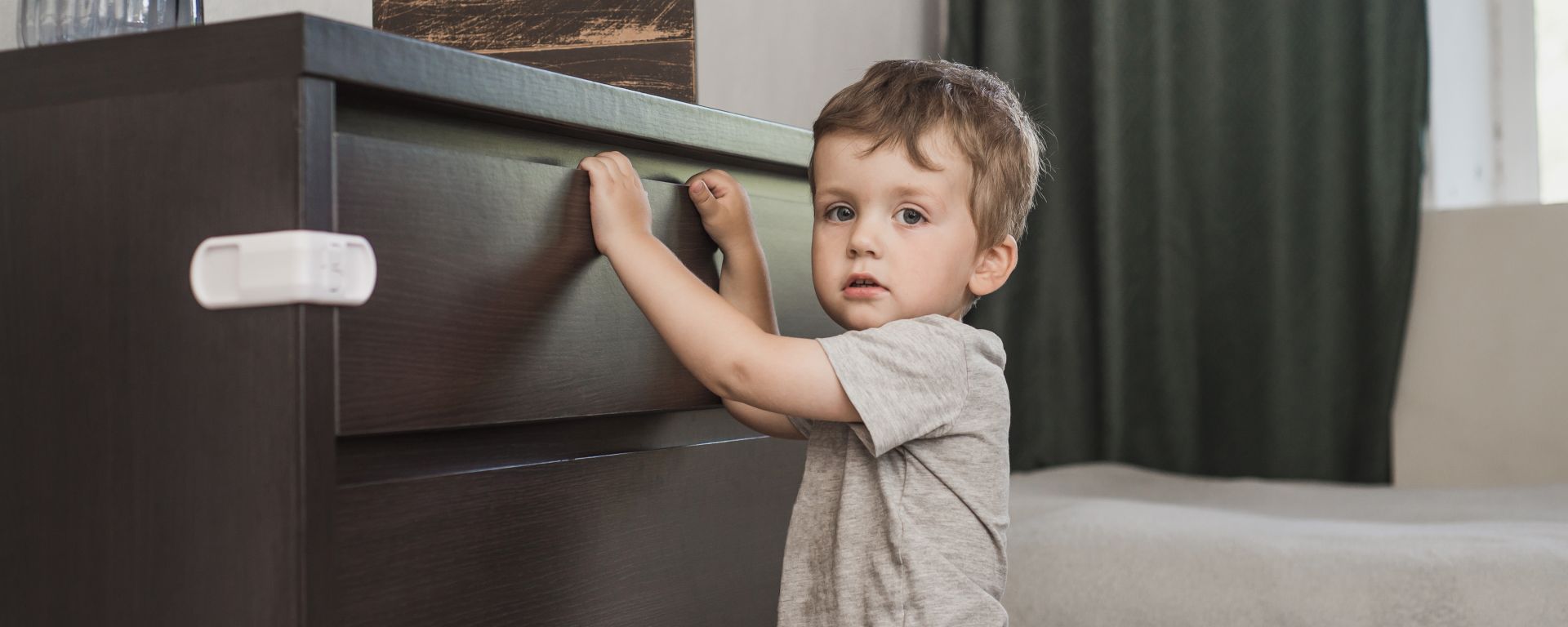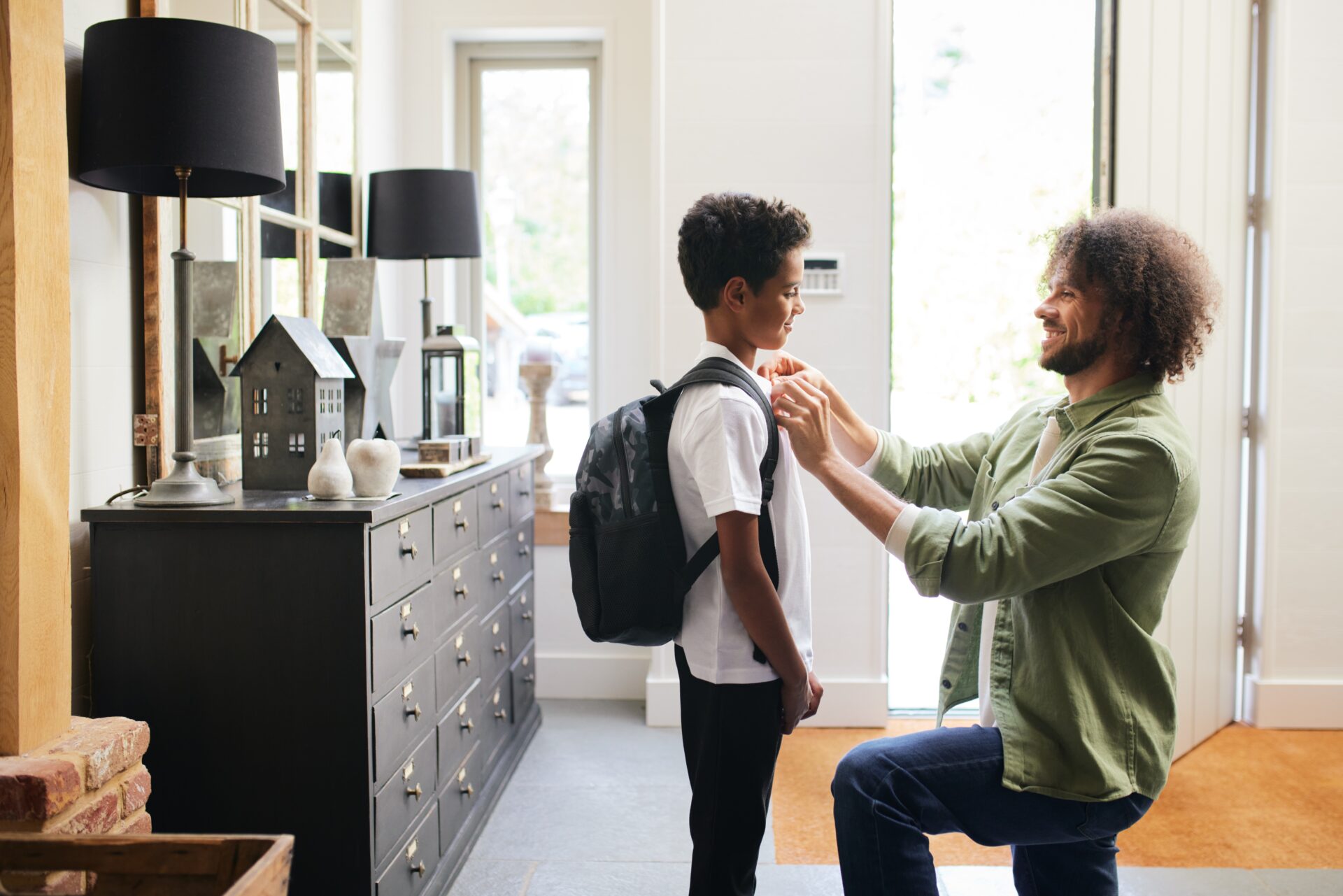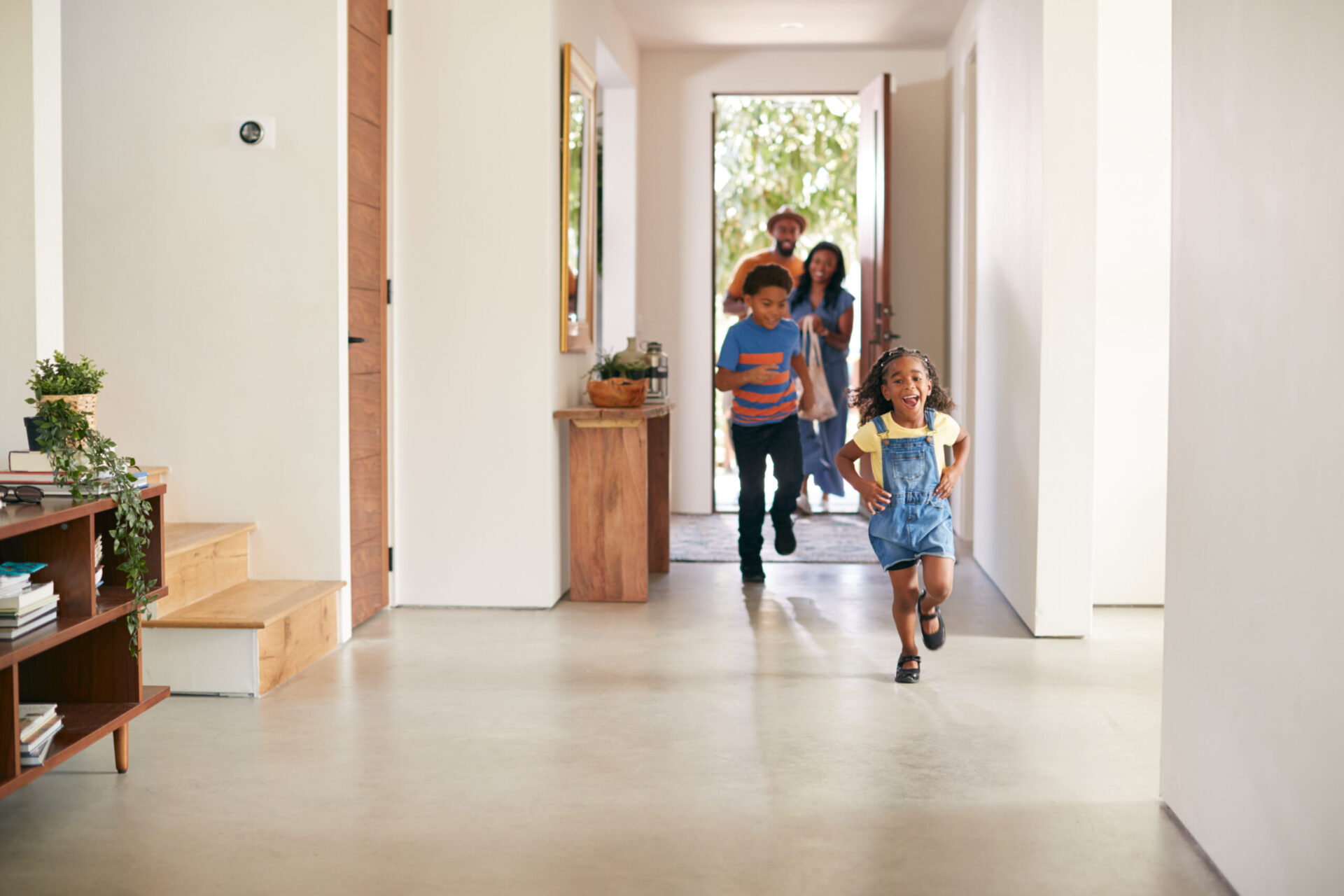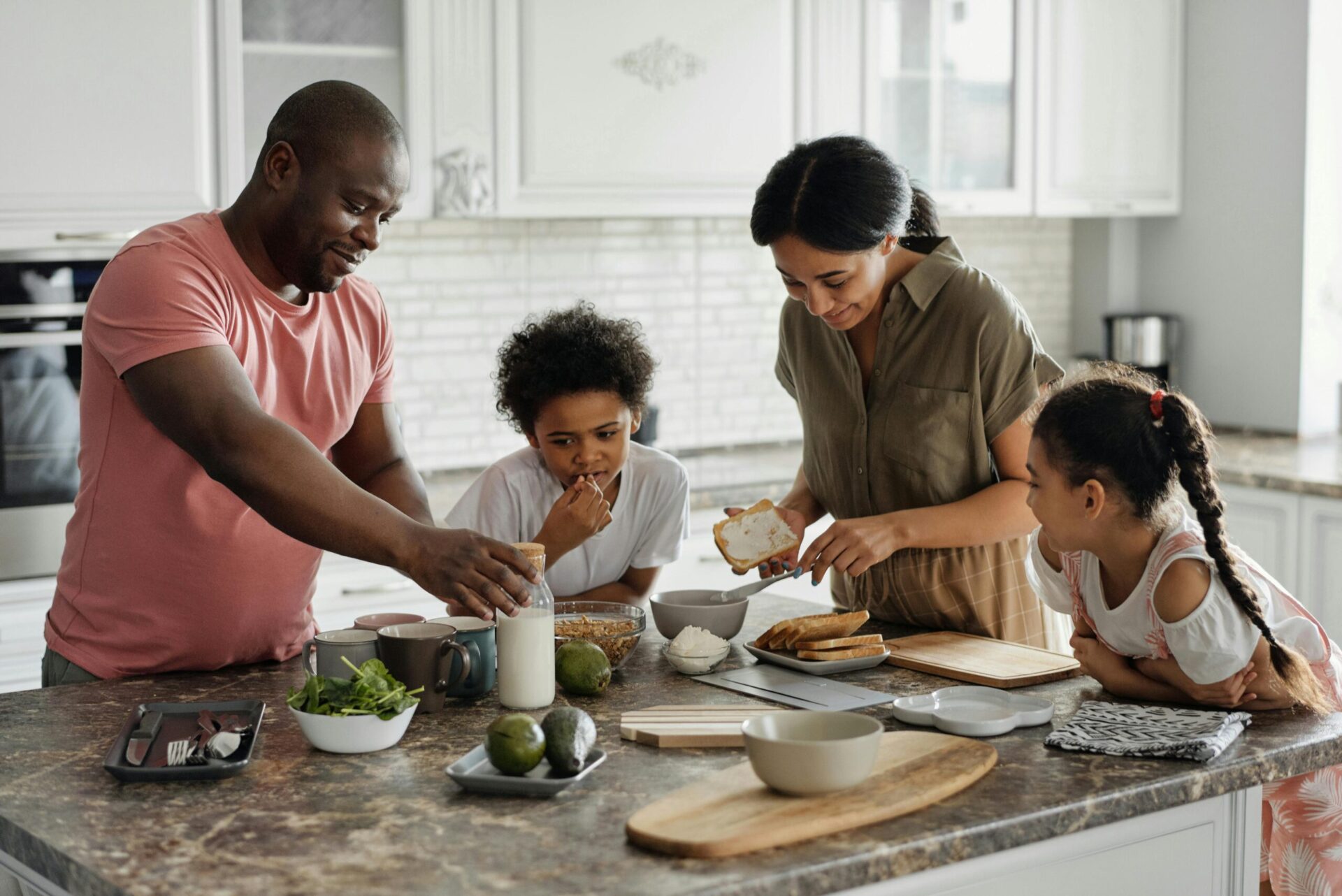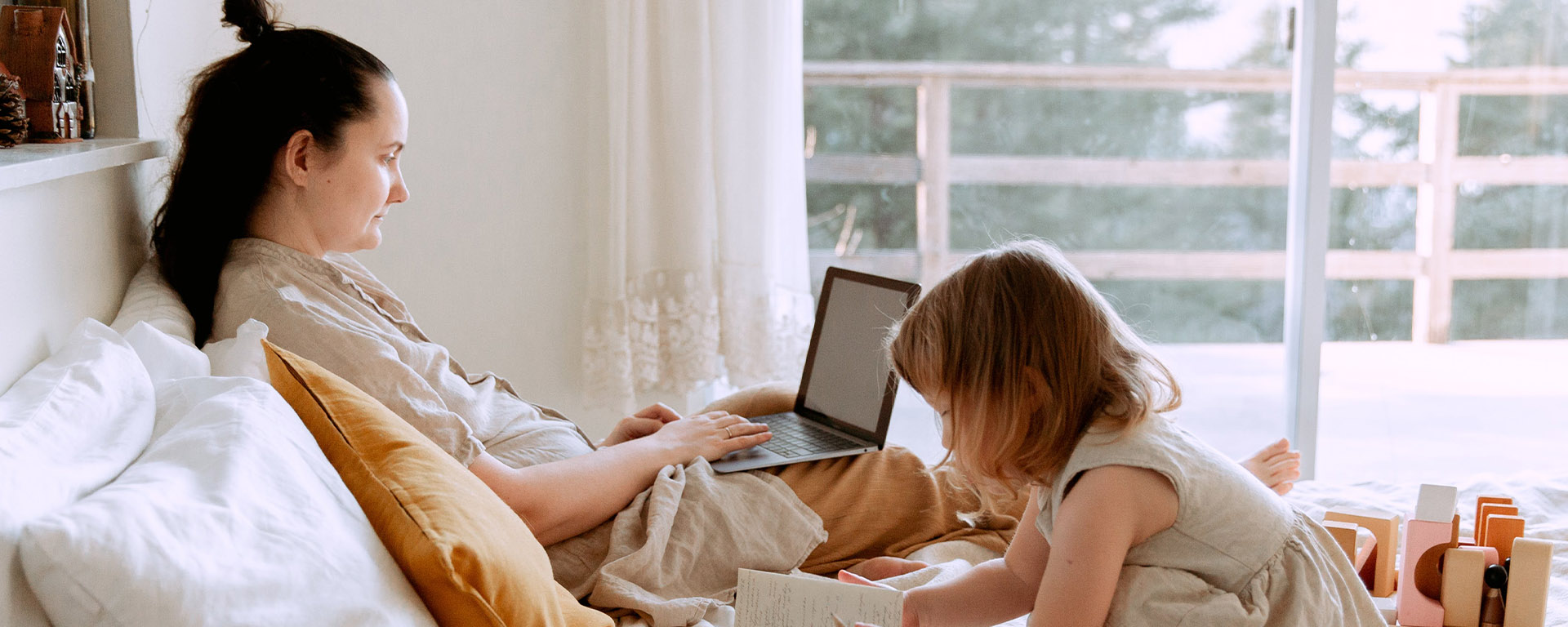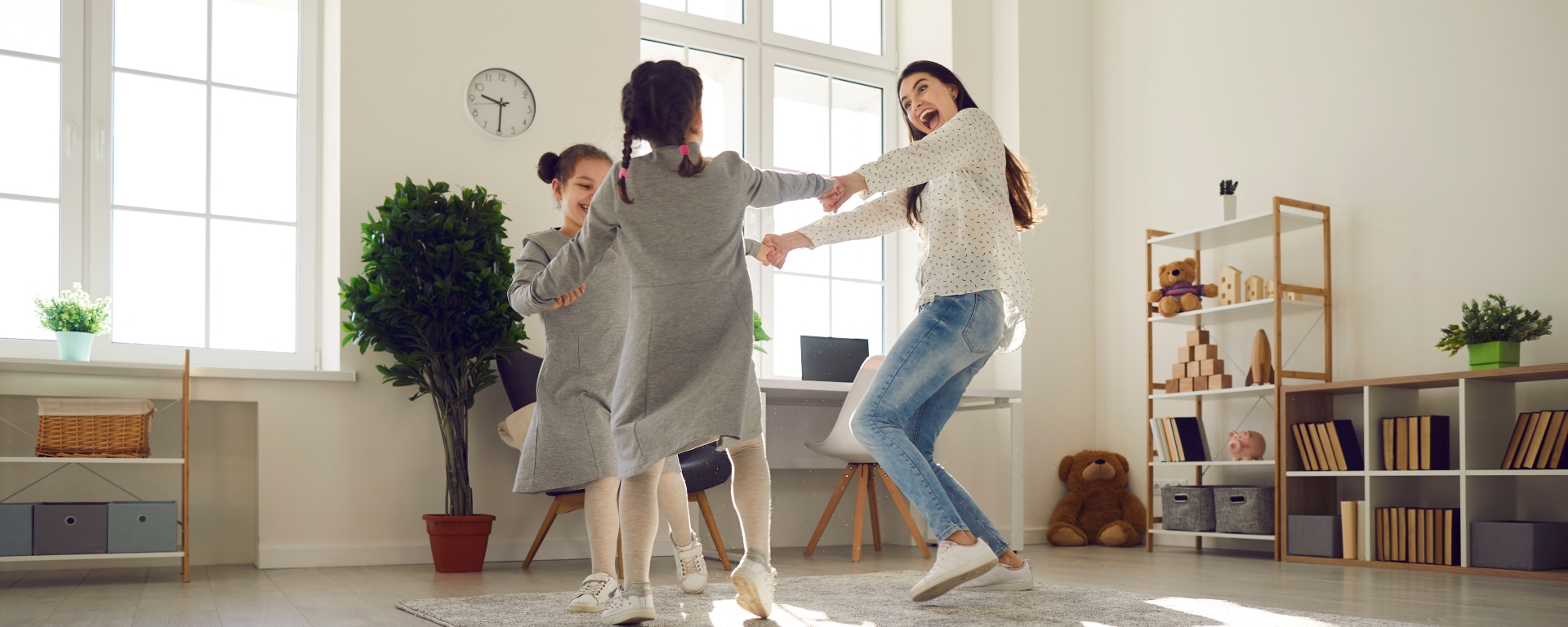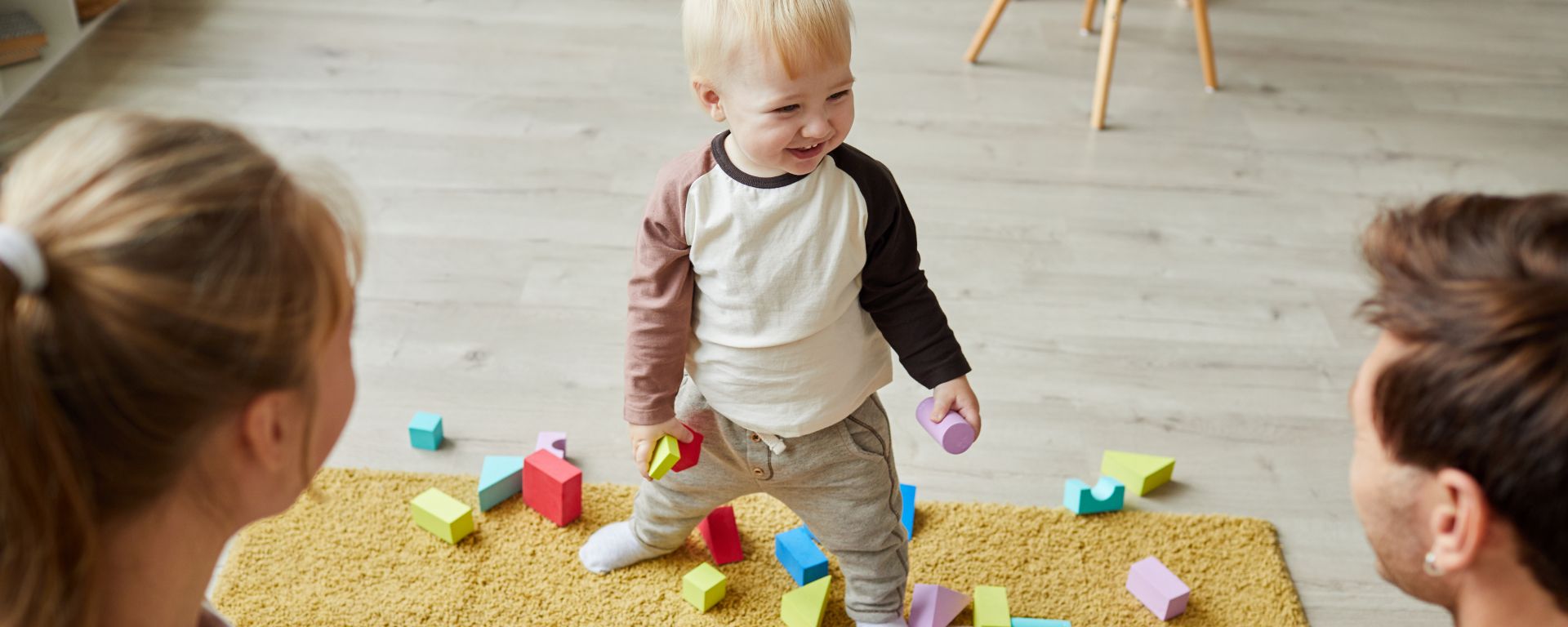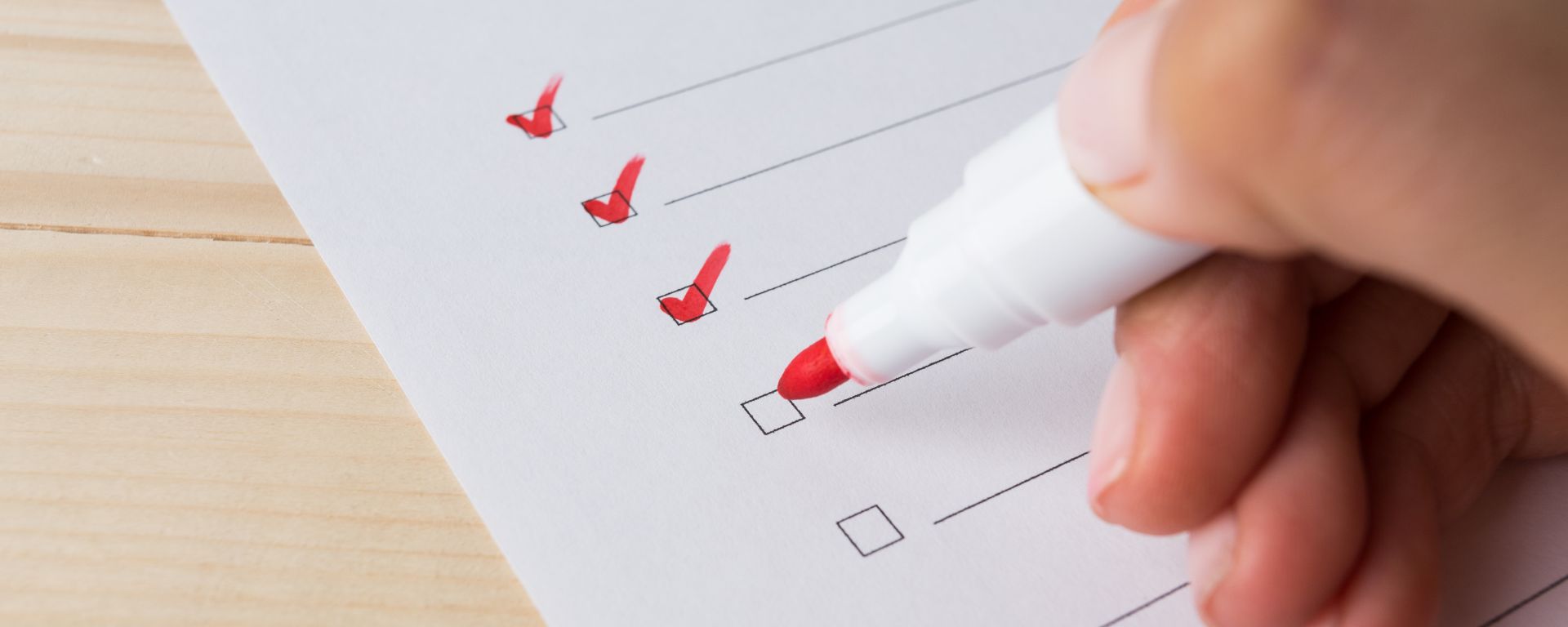As parents know and new parents will soon find out, as soon as babies learn how to crawl, they quickly become mischievous. With their newly discovered independence, children simply can’t help but pull, push, tug, and touch everything they lay their eyes on. You can childproof your home at any stage before your child becomes mobile; generally, this is between the ages of 6 to 10 months, but can vary. It’s smart to make your babyproofing adjustments and preparations a few months before the arrival of your baby, and the biggest change of your life.
Getting childproofing out of the way can reduce stress once the baby arrives, and ensures that you can enjoy every stage without having to worry about safety.
Childproofing is best done in stages. Some things are best done before you bring your baby home, but you can leave the baby gates and cabinet locks for when your baby has started crawling. These safeguards are a nuisance for everyone else in the house if they’re installed but not technically being used yet.
If your little one is soon to be crawling around the house, it’s essential to make sure that they have a safe environment to explore and play. We have compiled the ultimate baby and childproofing checklist to help you create a safe space for your little one.

Childproofing The Nursery
The nursery is the most important room for childproofing. Here are the guidelines to follow for creating a nursery that’s safe for your little one:
Remove Hazards From The Crib
Keeping your child’s sleeping area safe starts the moment you bring them home. Their crib should be a firm, flat surface. Don’t add any pillows, teddy bears, or even blankets to the crib. These are suffocation hazards.
Place the crib away from windows and other items of furniture. This will help keep your little one from grabbing onto things and pulling themselves out of the crib once they’re able to stand and climb.
Window Guards And Locks
Always use cordless blinds and curtains when there are little ones in the house since cords can also be a strangulation hazard. Also, you should consider installing window guards, so you can still open the windows for fresh air without worrying about your toddler or child climbing up to the window or pushing out the screen. Window stops and locks prevent your little one from opening the windows.
Cover Electrical Outlets
You will want to use outlet covers on all of the electrical outlets that are not being used. Keep all electronics, like baby monitors and night lights with their cords, out of the way of tiny fingers.
Changing Table
Ensure there are no choking hazards, electronics, or cords within reach of the changing pad. Also, you’ll want to store disposable nappies, creams and powders out of your child’s reach.
Pay Attention To Toys
Before buying and accepting gifts from family and friends, check to be sure that they are safe. Inspect toys that could be choking hazards, have smaller parts, or run on batteries. Particularly coin and button batteries, they can be very dangerous if accidentally swallowed. It’s best to keep battery-powered toys for when your baby is a little bit older or if they can be supervised.
If you have child-sized furniture such as a table and chair in the nursery, be sure to keep your attention on your child if they’re playing out of the crib. Your child will use these items for climbing as soon as they can move their legs, and try to get into shelves or access other furniture.
Anchor Furniture
Anchor all furniture items to the wall to prevent accidents if your new crawler decides to show off their climb ability. It’s wise to install childproof locks on dresser drawers to prevent your little one from turning their clothes and things into an obstacle.
Choose Nursery Decor Carefully
Take some extra care when choosing decor items including hangings, lamps and rugs. For example, choose light wall hangings like canvases to prevent heavy decor from falling down and on top of your child if they somehow manage to get a hand on it. Additionally, keep shelving you have, high up, to eliminate a ladder effect, and only place light items on shelves that you think your child might be able to access.
Add non-slip mats to area rugs to prevent them from slipping, or your child from tripping. When your child is learning to walk, place table lamps or night lights where your nanny can’t pull on wires or pull them off from the table.
Childproofing The Kitchen
As children grow, especially when they learn how to walk, you’ll see how they tend to enjoy following you around the house, and watching you cook and clean. But while your back is turned for just a second, they will begin to investigate their surroundings, as the kitchen is an exciting place for them. If you want to keep your child out of the kitchen, especially if you’re busy cooking or cleaning, you will need to childproof it in the following ways:
Install A Baby Gate
You can keep an eye on your baby and stop them from exploring other areas of the house with a baby gate. This makes it easier to monitor them while you’re both in the kitchen. A baby gate can also prevent your baby from entering the kitchen when you’re not there to supervise. Installing a baby gate is a simple DIY job, but you can also hire a professional to install the gate if you like.
Lock Kitchen Cupboards
Locks for your kitchen cabinets are vital when you have a young child around. These will keep your little ones from getting into the cupboards, searching through pots and pans, cleaning products, and anything else you keep in the cupboards.
Childproof Kitchen Appliances
When baby proofing appliances, there are some things to consider:
- Depending on how mischievous your child is, you may want to purchase appliance locks for your oven, dishwasher and fridge.
- Take care when loading and unloading the dishwasher. It’s a time when your child may have access to glasses, knives and detergent.
- Stove knob covers will stop your toddler from accidentally turning on the stove.
- Smaller appliances are best left unplugged, and if possible, stored away in a locked cabinet. This will prevent your baby from grabbing a cord or pushing a button that switches the blender on.
- Mount the microwave high enough to keep it out of reach from your child.
You will also want to pay attention to where you keep items like knives, cleaning products, chemicals, and your trash. Some of these are also kept on countertops, meaning they can become a potential threat.
When childproofing your kitchen, consider keeping knives in a drawer or high up in a cabinet. Be sure there is a lid on the trash can, or get one with a locking lid. Fridge magnets can be a choking hazard, be sure to place them high up on the fridge or store them away until your child is older.
With all of these areas off-limits, your child may become frustrated with not being able to open anything. Consider leaving a cupboard unlocked with a few metal or plastic, child-safe bowls and wooden spoons, or any other baby proof items, so that your little one can be entertained while you’re cooking.
Childproofing the Bathroom
Families usually keep cleaning products, medicines, and personal care items in the bathroom. Use this checklist to help childproof your bathroom:
Lock Cabinets
Install cabinet locks so that your child doesn’t get into anywhere they shouldn’t. If necessary, you can buy a locked cabinet to store medicines, toiletries and cleaning products. Also, don’t forget to secure drawers in the bathroom cabinets and vanity as well.
Store Hair Dryers, Straighteners And Other Electronic Devices
Hair straighteners, hair dryers, electric toothbrushes, and electrical razors are all unsafe for your little one. Keep them safely stored in locked drawers or cabinets when they’re not being used. Also, remember to cover any unsure outlets with outlet covers.
Lock The Toilet
The toilet is the last place you want your baby to explore. Not only is it full of germs, but the small amount of water in it is enough for it to be a drowning hazard. Babies and toddlers are known for splashing, playing, and throwing their toys into the toilet, making a big mess. You can solve this issue with a seat lock to make the toilet inaccessible.
Use A Non-Slip Bath Mat
In the bathtub you will want to use a non-slip mat, to prevent your child from slipping or sliding when sitting in the bath. Bathtubs are also a drowning hazard for small children. In addition to the mat, be sure to supervise your baby in the tub and never leave them alone in the bath or bathroom.
Lock The Bathroom
Whenever you and your baby aren’t in the bathroom, keep it off-limits by locking it from the outside. You could use a bolt lock or a doorknob cover to prevent your child from entering this room while unsupervised.
Other childproofing methods for the bathroom include putting the lids of items such as medications, shaving creams, shampoos and toothpaste back on tightly to secure them. And consider buying or even making a guard that prevents toilet paper from unravelling – it will keep your pets from pulling on the toilet paper too.
Childproof The Living Room
The living room has to be a relaxing place for the whole family. When childproofing your living room, there are many factors to consider. Here are some tips to help make this a safe space for your baby:
Secure Large Items
Secure all furniture by bolting it to the floor and wall with braces, straps and anchors. This will prevent heavy items like bookcases from falling over onto your child, who’s trying to climb onto them. Other large living room items like the television or mirrors, should also be mounted securely on a wall.
Keep Fragile Items Away
Living rooms often display picture frames, house plants, lamps, candles and other breakable items. Be sure that these are out of reach, as they could shatter into shards if broken.
Edge Guards
Some coffee tables, chairs and bookshelves might have sharp edges that will hurt if run into. Use guards, covers and bumpers to keep your little one from bumping their head or poking an eye.
Install A Baby Gate
Just like with the kitchen, consider installing a baby gate in the living room. A baby gate closing off the entrance or exit of the living room can help the rest of the family relax and watch TV instead of having to chase after your toddler.
Electrical Safety
Store items like remote controls or games with batteries out of reach. And also, don’t forget to cover unused outlets with outlet covers.
Childproofing Staircases
As soon as your child begins to walk and crawl, they will want to start going up and down the stairs. If you have stairs inside of your home, you may want to take a look at this checklist:
Installing A Gate
You’re probably noticing a pattern here, but the baby gates are important to have at the top and bottom of staircases especially. The moment your little one starts to crawl, install a baby gate as soon as possible, and do routine checks to make sure it’s closing and opening efficiently.
Tripping Hazards
Inspect your flooring to identify any bumps, cracks or bulges that could cause your toddler to trip. Be sure the stairs are not slippery. If they are, you may want to consider putting socks with rubber band tread on your child’s feet to prevent them from tumbling down the stairs.
If your flooring is damaged, consider upgrading the floors to a kid-friendly material. It may mean switching polished, hardwood flooring for a softer carpet. Keep your floors safe and clean for your baby to crawl or walk on. You may want to read how to mop and clean all types of floors in your home.
Railings
As your child grows older and taller, you’ll want to make sure that staircases are fitted with railings or bannisters that are sturdy enough to support yours and your child’s weight when going up or down the stairs. Replace loose or damaged railings with the help of an expert.
Baby Proofing Outdoors
Little kids love playing outside. But before allowing them to explore the garden or backyard, make sure these areas are also safe:
Inspect And Repair The Deck Or Patio
If you have a balcony, porch, deck or patio in your garden, start by carefully checking the railing. You’ll want to ensure the space between each rung is small enough so that your baby can’t get their head trapped in between.
You should make sure that these structures are in good condition. Be sure to schedule repairs to keep your child safe. Also, repairing your patio or deck is a worthwhile investment for the value of your home.
Put A Fence Or Gate Around The Pool
A pool is a lovely place for the whole family, including your child, but can also be a hazard. Ideally, your pool should be fenced or have a gate around it so that your child cannot access the pool by themselves, without your supervision. If your pool already has a gate around it, then you should just check its condition. You may want to hire a professional for this task. Make sure your pool is clean for the times you and your child decide to take a dip together.
Create A Secure Tool Area
Whether you use the garage or a shed, it’s a good idea to have a locked cabinet and safe space for dangerous items and tools. There you can keep sharp tools and backyard equipment, such as the lawn mower and grill, oil, gas and other items away from curious toddlers.
Avoid Poisonous Plants
Your baby probably loves putting things in its mouth. This means they might try tasting some of your backyard or lawn plants. For this reason, ensure that none of the plants in your garden are toxic. Also, keep an eye out for plants with berries that can be easy choking hazards. You may want to reach out to one of our outdoor experts for some help and advice about which plants should be removed and which plants are safe.
Lock Up The Grill Or Fire Pit Supplies
Braais and gatherings in the garden are a lot of fun. Make sure you keep supplies such as matches, lighter fluid and charcoal locked up when not in use. Also, never leave a hot grill unattended. Remember that it takes a long time for them to cool off, so keep your child away even if the grill is no longer in use.
Make Sure Play Sets Are Installed Correctly
Setting up a swing or slide for your child for your little ones can provide hours of fun. If you’re unsure of how to install a playset or jungle gym, you may want to consider hiring a professional that has the experience and good reviews. And inspect the equipment from time to time to identify any broken parts that may need to be replaced.
Are you ready to start your childproofing checklist? Many of these babyproofing tasks can be completely rearranging items in your home and storing sharp or dangerous objects away. However, some tasks are more complex and not everyone is into DIY tasks. If you’re feeling overwhelmed by installing dozens of cabinet locks, you’re not sure how to anchor furniture to the wall, or any other childproofing repairs or adjustments, you may need to get in contact with professionals who can help you fix these things properly.
If you’re a busy parent and can’t find the time to clean your home, you can book a professional cleaning service for your entire home with SweepSouth.
